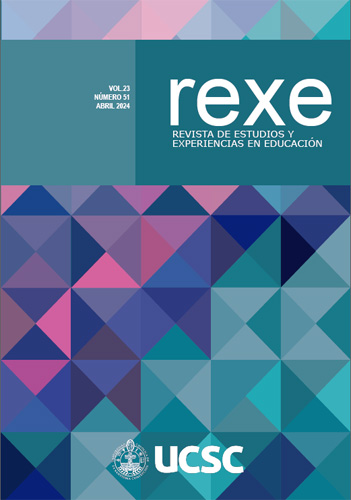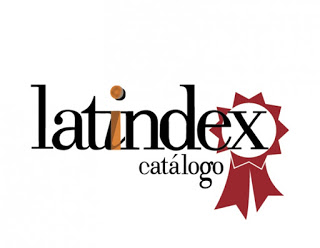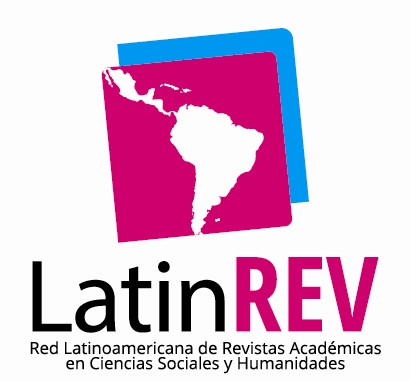Imagen, materia y objeto: una experiencia pedagógica en torno al dispositivo-artístico- didáctico para la construcción de espacios de aprendizaje en el grado de primaria
DOI:
https://doi.org/10.21703/rexe.v23i51.2170Palabras clave:
arte, dispositivo, didáctica, aprendizaje, primariaResumen
El presente artículo trae al frente una experiencia pedagógica desarrollada mediante la metodología de Aprendizaje Basado en Proyectos (ABP) a partir de la práctica docente con el alumnado de la asignatura de Educación visual y plástica, del segundo curso del grado de primaria de la Facultad de Educación de la Universidad de Zaragoza. Con este proyecto, situado en el programa de la asignatura, se buscó conocer la función didáctica de los dispositivos desde su materialidad como generadores de conocimiento en la comprensión de fenómenos complejos. Todo ello, asentado en los debates actuales en torno a la materialidad de las imágenes, en los cruces epistemológicos existentes que conforman la actualidad de las investigaciones en imágenes; así, esta propuesta explora los límites conceptuales en el sentido en el que los dispositivos pueden ser generadores de conocimiento desde sus propias formas de aparecer y en la confrontación directa entre el objeto y el espectador, mediante la manipulación de este. A partir de los hallazgos obtenidos, se concluye con que la construcción de los objetos para la adquisición de conocimientos es idónea para la mejora de los aprendizajes integrados y globalizados, una exigencia actual de las leyes educativas como LOMLOE (Ley Orgánica 3/2020, de 29 de diciembre, por la que se modifica la Ley Orgánica 2/2006, de 3 de mayo, de educación), conformando un escenario pedagógico donde el acento se pone en una renovada atención hacia las imágenes y sus posibilidades cognitivas.
Descargas
Referencias
Acaso, M. (13 de septiembre de 2017). Art Thinking, Educación artística, Educación disruptiva. Obtenido de Del libro de texto al vídeo de sexto. Las prácticas artísticas contemporáneas como detonantes de la inversión de roles en la producción de recursos educativos en la educación primaria: https://mariaacaso.es/educacion-disruptiva/del-libro-texto-al-video-sexto-las-practicas-artisticas-contemporaneas-detonantes-la-inversion-roles-la-produccion-recursos-educativos-la-educacion-primaria/
Acaso, M., y Megías, C. (2017). Art Thinking. Cómo el arte puede transformar la educación. Barcelona: Paidós Educación.
Argás, P. (2010). Los proyectos de trabajo en el aula. Reflexiones y experiencias prácticas. Graó Laboratorio Educativo.
Arraiz, A., Sabirón, F., Cortés, A., Buenos, C., Escudero, T., y Berbegal, A. (2007). El portafolio-etnográfico: un instrumento para la evaluación de competencias. Prensas Universitarias de Zaragoza.
Ballester, A. (2002). El aprendizaje significativo en la práctica. Cómo hacer que el aprendizaje sea significativo en el aula. Seminario de aprendizaje significativo. https://eduteka.icesi.edu.co/pdfdir/ElAprendizajeSignificativoEnLaPractica.pdf
Bredekamp, H. (2015). Teoría del acto icónico. Akal.
Boehm, H.P. (1994) Some Aspects of the Surface Chemistry of Carbon Blacks and Other Carbons. Carbon, 32, 759- 769. http://dx.doi.org/10.1016/0008-6223(94)90031-0 DOI: https://doi.org/10.1016/0008-6223(94)90031-0
De Miguel, M. (2005). Modalidades de enseñanza centradas en el desarrollo de competencias. Orientaciones para promover el cambio metodológico en el Espacio Europeo de Educación Superior. Universidad de Oviedo.
Delors, J. (1996). Los cuatro pilares de la educación. En J. Delors, La Educación encierra un tesoro. UNESCO.
Dewey, J. (1949). El arte como experiencia. Fondo de Cultura Económica.
Díaz, F., y Hernández, G. (2002). Estrategias docentes para un aprendizaje significativo. Una interpretación constructivista. México: Mc Graw Hill .
Dickinson, K., Soukamneuth, S., Yu, H., Kimball, M., D'Amico, R., Perry, R., y Curan, S. (1998). Technical assistance guide: Providing educational services in the Summer Youth Employment and Training Program. Department of Labor.
Dikovitskaya, M. (2006): Visual Culture: The Study of the Visual after the Cultural Turn. The MIT Press.
Educagob. (13 de junio de 2023). Obtenido de Situaciones de aprendizaje: https://educagob.educacionyfp.gob.es/curriculo/curriculo-lomloe/menu-curriculos-basicos/bachillerato/situaciones-aprendizaje.html
English, M. C., y Kitsantas, A. (2013). Supporting Student Self-Regulated Learning in Problem- and Project-Based Learning. Interdisciplinary Journal of Problem-based Learning, 128-150. DOI: https://doi.org/10.7771/1541-5015.1339
Elkins, J (2003). Visual Studies: A Skeptical Introduction. Routledge.
Elkins, J. (2008): “On Some Limits of Materiality in Art History,” 31: Das Magazin des Instituts für Theorie. Zürich, 12, 25–30.
Fernández March, A. (2006). Metodologías activas para la formación de competencias. Educatio Siglo XXI, 24, 35–56. https://revistas.um.es/educatio/article/view/152
Foucault, M. (2003). Vigilar y castigar. El nacimiento de la prisión. Siglo XXI.
García, C. E. (2006). Cómo elaborar un proyecto cultural. México: Consejo Nacional para la Cultura y las Artes.
García Varas, A. (2013) Imágenes con poder: representaciones de la guerra. Referencia, sentidos y actos de imagen. Enrahonar: an international journal of theoretical and practical reason, 50, 11-29. DOI: https://doi.org/10.5565/rev/enrahonar/v50.110
Gell, A. (1998). Art and agency: an anthropological theory. Oxford University Press. DOI: https://doi.org/10.1093/oso/9780198280132.001.0001
Boehm, B. (1994). Was ist ein Bild?, Wilhelm Fink Verlag, Munich.
Greenleaf, P. (2007). Preferiría estar aprendiendo: Como los exámenes estandarizados atrasan el aprendizaje y lo que podemos hacer. Lulu Press, Inc.
Gude, O. (2013). New School Art Styles: The Project of Art Education. Art Education. The Journal of the National Art Education Association, 6–15. DOI: https://doi.org/10.1080/00043125.2013.11519203
Gumbrecht, H.U. (2004). Production of presence: What Meaning Cannot Convey. Standford University Press. DOI: https://doi.org/10.1515/9780804767149
Ingold, T. (2007). “Materials against Materiality”, Archeological Dialogues, 14 (1), 1-16. DOI: https://doi.org/10.1017/S1380203807002127
Ingold, T. (2010). “Bringing Things to Life: creative Entanglements in a World of Materials”, Working Paper-15, Realities, ESRC National Centre for Research Methods: 1-14.
Ingold, T. (2013). Making. Routledge, London. DOI: https://doi.org/10.4324/9780203559055
Katz, L. G., y Chard, S. C. (2000). Engaging children’s minds: The project approach (2ª ed.). Stamford: CT: Ablex.
Klein, J., Taveras, S., King, E. D., Commitante, A., Curtis-Bey, L., & Stripling, B. (2009). Project-Based Learning: Inspiring Middle School Students to Engage in Deep and Active Learning. Nueva York: NYC Department of Education.
Kolodner, J. L., Camp, P. J., Crismond, D., Fasse, B., Gray, J., y Holbrook, J. (2003). Problem-based learning meets case-based reasoning in the middle-school science classroom: Putting Learning by Design into practice. Journal of the Learning Sciences, 495- 547. DOI: https://doi.org/10.1207/S15327809JLS1204_2
Martin, N., y Baker, A. (2000). Linking work and learning toolkit. Portland: OR: Northwest Regional Educational.
Mauri, T. (1995). ¿Qué hace que el alumno y la alumna aprendan los contenidos escolares? La naturaleza activa y constructivista del conocimiento. En El constructivismo en el aula (3ª ed., pp. 65-99). Barcelona: Editorial Graó, de Serveis Pedagògics.
Medina-Nicolalde, M., y Tapia-Calvopiña, M. (2017). El aprendizaje basado en problemas, una estrategia para el trabajo interdisciplinario en el aula. OLIMPIA. Revista de la Facultad de Cultura Física de la Universidad de Granma, 14(46), 142-153.
Mitchell, W.J.T. (2010). ¿Qué quieren las imágenes? Sans Soleil.
Moreira, M. (2000). Aprendiaje significativo: teoría y práctica. Aprendizaje Visor.
Morín, E. (2007). "Complexité restreinte, complexité générale", en Intelligence de la complexité. Épistémologie et pragmatique. Éditions de l'Aube: 28-64. DOI: https://doi.org/10.3917/herm.lemo.2013.01.0028
Moxey, K. (2015). El tiempo de lo visual: la imagen en la historia. Sans Soleil.
Murillo, V. y Revilla, A. (2020). La educación artística a través de las ciudades de Gerhard Richter. Arte y políticas de identidad, 22, 89-116. DOI: https://doi.org/10.6018/reapi.433951
Murillo-Ligorred, V. y Ramos-Vallecillo, N. (2023). Transdisciplinariedad entre arte, ciencia y tecnología: superación de fronteras en las propuestas didáctico-expositivas de Karin Ohlenschläger en su etapa como directora de LABoral Gijón. Artnodes 32. DOI: https://doi.org/10.7238/artnodes.v0i32.411828
Nisbet, J., y Shuckmith, J. (1980). Estrategias de aprendizaje. Santillana.
Peeck, J., Van Den Bosch, A. B., y Kruepeling, W. (1982). The effect of mobilizing prior knowledge on learning from text. Journal of Educational Psychology, 74, 771–777. DOI: https://doi.org/10.1037//0022-0663.74.5.771
Peralta Lara, D. C., y Guamán Gómez, V. J. (2020). Metodologías activas para la enseñanza y aprendizaje de los estudios sociales. Sociedad &Amp; Tecnología, 3(2), 2–10. https://doi.org/10.51247/st.v3i2.62 DOI: https://doi.org/10.51247/st.v3i2.62
Perera, F. (2008). Proceso de enseñanza-aprendizaje. Interdisciplinariedad o integración. Varona 48-49/2009 43-39
Ramos-Vallecillo, N. (2020). La evaluación competencial en el Proyecto Artístico. Un estudio de caso en secundaria. DEDiCA Revista De Educação E Humanidades (dreh), (17), 361–376. https://doi.org/10.30827/dreh.v0i17.15625 DOI: https://doi.org/10.30827/dreh.v0i17.15625
Ramos-Vallecillo, N. (2022). Art Thinking en la Etapa de Educación infantil: hacer aprendiendo y aprender haciendo. Tercio Creciente, 91–99. DOI: https://doi.org/10.17561/rtc.extra6.6510
Rancière, J. (2010). El espectador emancipado. Ellago.
Rodríguez-Sandoval, E., Vargas-Solano, E., y Luna-Cortes, J. (2010). Evaluación de la estrategia “aprendizaje basado en proyectos”. Educación y educadores, 13(1), 13-25. DOI: https://doi.org/10.5294/edu.2010.13.1.1
Ruiz-Martín, H. (2020). ¿Cómo aprendemos?: una aproximación científica al aprendizaje y la enseñanza, Graó.
Sachs-Hombach, K. (2003). Das Bild als kommunikatives Medium. Elemente einer allgemeinen Bildwissenschaft. Herbert von Halem Verlag.
Sánchez, J. (3 de mayo de 2013). Qué dicen los estudios sobre el Aprendizaje Basado en Proyectos. actualidadpedagogica.com: http://actualidadpedagogica.com/estudios_abp/
Silva, J., y Maturana, D. (2017). Una propuesta de modelo para introducir metodologías activas en educación superior. Innovación Educativa, 17(73),117-131. https://www.redalyc.org/articulo.oa?id=179450594006
Soto Calderón, A. (2020). La performatividad de las imágenes. Metales pesados. DOI: https://doi.org/10.2307/j.ctv18dvtv9
Thomas, J. W. (2000). A review of research on project-based learning. California: The Autodesk Foundation.
Van Eck, C. (2015a): Art, Agency and Living Presence: From the Animated Image to the Excessive Object. Leiden, München: Leiden University Press, De Gruyter. DOI: https://doi.org/10.1515/9783110345568
Van Eck, C. (2015b): “ArtWorks that Refuse to Behave: Agency, Excess and Material Presence in Canova and Manet” New Literary History, 46, 409-34. DOI: https://doi.org/10.1353/nlh.2015.0029
Van Eck, C., Versluys, M.J., y Ter Keurs, P. (2015): “The biography of cultures: style, objects and agency. Proposal for an interdisciplinary approach”, en Cahiers de l’École du Louvre. Recherches en histoire de l’art, histoire des civilisations, archéologie, anthropologie et muséologie, 7: 2-22. DOI: https://doi.org/10.4000/cel.275
Vergara, C. (2022). cristina vergara _ design. https://www.cristinavergara.com/portfolio-items/sobre/
Zabala, A. (1995). Los enfoques didácticos. En El constructivismo en el aula (3ª ed., pp. 125-161). Editorial Graó, de Serveis Pedagògics.
Descargas
Publicado
Número
Sección
Licencia
Derechos de autor 2023 Nora Ramos-Vallecillo, Víctor Murillo-Ligorred

Esta obra está bajo una licencia internacional Creative Commons Atribución 4.0.
Política de acceso abierto
Esta revista proporciona un acceso abierto inmediato a su contenido, basado en el principio de que ofrecer al público un acceso libre a las investigaciones ayuda a un mayor intercambio global de conocimiento.
Licencia
Revista REXE "Revista de Estudios y Experiencias en Educación" de la Facultad de Educación, Universidad Católica de la Santísima Concepción, está distribuido bajo una Licencia Creative Commons Atribución 4.0 Internacional.






